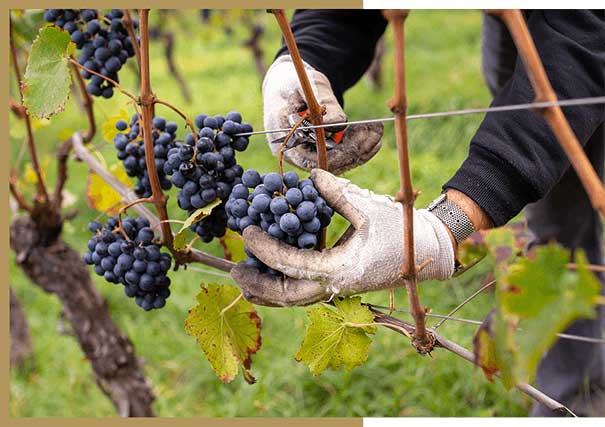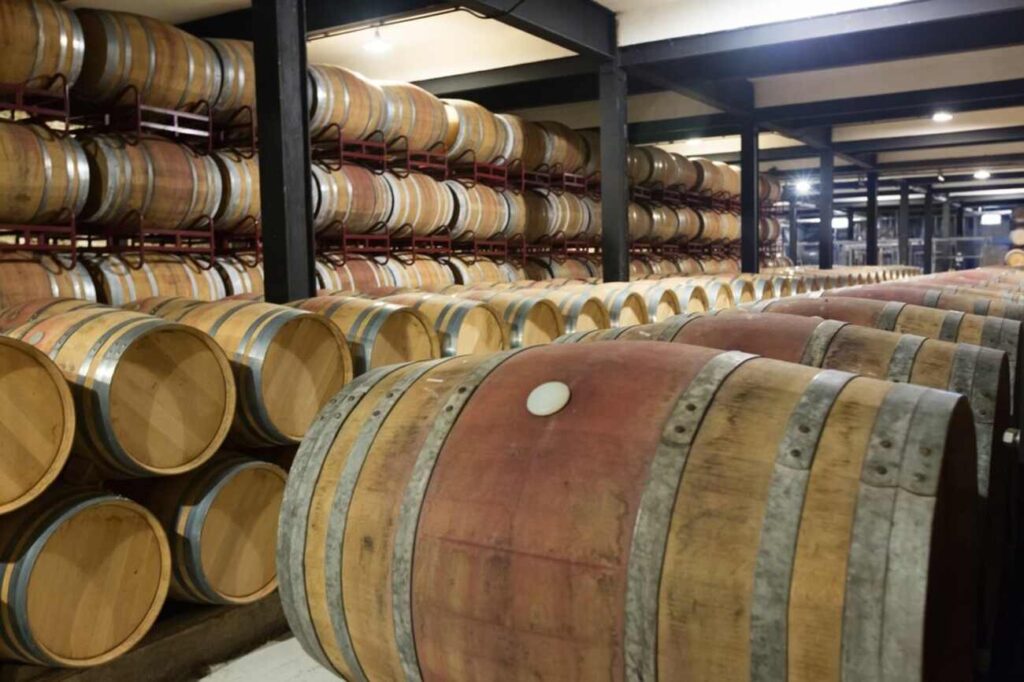At Protea Financial, we know that for a winery, the rhythm of the year culminates in the intensity of harvest. This is the moment when all the hard work of the growing season comes to fruition.
This phase is unquestionably the most crucial and resource-intensive segment of your operational cycle. Although prioritizing grape quality is essential, it is equally important to carefully monitor all expenditures to ensure effective cost management.
Accurate harvest cost tracking is the foundation of the correct Cost of Goods Sold (COGS), which in turn determines your true profitability. Let’s break down the three core components of harvest costs (labor, materials, and overhead) and explain how a precise understanding of each is essential for making smarter, more profitable decisions long after the last grape has been pressed.
The Three Pillars of Harvest Costs: Labor, Materials, and Overhead
To accurately assess harvest costs, it is important to go beyond simply recording invoices and payroll. Expenses should be categorized and attributed appropriately. The three main categories of harvest costs are:
- Labor Costs: The wages, benefits, and associated expenses for all personnel involved in the harvest and initial winemaking stages.
- Materials Costs: All tangible goods and inputs consumed during the harvest and production process.
- Overhead Costs: The indirect but essential expenses that support the entire harvest operation.
Combining all costs into one “harvest expenses” category on your P&L can make it difficult to identify specific insights. A more detailed approach that assigns each cost to its respective vineyard block or wine lot provides clearer financial tracking and analysis.
Labor Costs: The Most Variable and Critical Expense
Labor is often the single largest expense during harvest, and it is also the most variable. Accurately tracking these costs is crucial for understanding the real cost of your grapes.
What to track:
- Vineyard Crews: This includes contract labor and seasonal hires for picking, sorting, and hauling.
- Cellar Staff: Overtime and additional hours for permanent cellar workers, as well as temporary staff for crush and fermentation procedures.
- Supervisory and Management Labor: A portion of your winemaker’s and vineyard manager’s salaries that can be directly attributed to the harvest.
Why it’s challenging and how to master it:
- Variable Pay Structures: Whether you pay by the hour, by the ton, or by the acre, tracking these costs accurately can be a logistical challenge. We recommend implementing time-tracking software or a detailed log system that links labor hours directly to specific vineyard blocks or tasks.
- Associated Costs: Don’t forget to include payroll taxes, workers’ compensation insurance, benefits, and any harvest bonuses. These add a significant percentage to base wages and must be factored in for a true picture of your labor cost.
Monitoring labor costs in detail enables you to identify the vineyard blocks that require the most labor and evaluate crew efficiency and improve staffing decisions. This approach delivers essential insights for informed operational planning in the future.

Materials Costs: From the Vineyard to the Tank
The material costs of harvest extend beyond the grapes themselves. These are the direct inputs that go into turning your fruit into juice and then into wine.
What to track:
- Grape Costs: For wineries that purchase grapes, this is a direct and significant cost.
- Harvest Supplies: Picking bins, lug boxes, cleaning chemicals, and sanitizers.
- Winemaking Inputs: Yeast, nutrients, additives, and various amendments used during fermentation.
- Packaging and Transport: The cost of transport from the vineyard to the winery.
Why it’s challenging and how to master it:
- Attributing to Specific Lots: The challenge lies in accurately attributing a specific cost to a specific wine lot. For example, a single purchase of yeast may be used for multiple tanks. We recommend a system where supplies are logged out and attributed to the specific lot that uses them.
- Utility Costs: The significant increase in electricity and water usage during harvest should be tracked and, if possible, allocated to the harvest period.
- Data Integration: Using a comprehensive winery management system can help link material purchases directly to specific work orders or lots, automating the allocation process and ensuring accuracy.
Overhead Costs: The Silent Profit Eroder
Overhead costs are indirect expenses associated with harvesting and may sometimes be excluded from final cost analysis. If not properly allocated, these costs can affect calculated profit margins.
What to track:
- Depreciation: The depreciation of expensive harvest and cellar equipment (e.g., crushers, presses, tanks) that is used intensively during this period.
- Insurance: A portion of your property, casualty, and crop insurance premiums.
- Utilities: The portion of your building’s rent, property taxes, and administrative costs that are attributable to harvest activities.
- General and Administrative (G&A): A percentage of administrative salaries, bookkeeping fees, and other G&A expenses should be capitalized into inventory during the harvest period.
Why it’s challenging and how to master it:
- Allocation: Overhead costs must be allocated to inventory using a consistent, defensible method. Common methods include allocation based on total tons crushed, total direct labor hours, or a percentage of the total operating days.
- Capitalization: For tax purposes, many of these costs must be capitalized into inventory, not simply expensed. This is a nuanced area of accounting that requires specialized expertise.
- Comprehensive Tracking: Keeping a log of equipment usage and allocating a portion of fixed costs to the harvest period ensures that the true, full cost of production is captured.

The Crucial Link to Profitability
Accurate tracking of these three cost components is important for effective financial management. Well-documented harvest costs contribute to calculating the COGS. A precise COGS calculation enables you to:
- Set Profitable Prices: With a true understanding of your costs, you can set prices that ensure a healthy profit margin for each wine.
- Evaluate Vineyard Performance: You can analyze which vineyard blocks or varietals are most profitable, informing future decisions about vineyard management and planting.
- Inform Production Strategy: This data can reveal which production methods are most cost-effective, guiding your winemaking strategy.
Partnering with Protea Financial for Harvest Cost Excellence
We understand that you can’t be in the vineyard, the cellar, and the accounting office at the same time. That’s where our team of financial experts comes in. At Protea Financial, we specialize in helping wineries:
- Set Up Detailed Tracking: We organize your accounts to monitor harvest costs closely.
- Create Cost Allocation Methods: We establish consistent ways to assign labor, material, and overhead costs to each wine lot.
- Use Technology Efficiently: We help you implement software for data tracking and financial reporting.
- Deliver Expert Insights: We provide analysis to guide your profitable decisions with harvest cost data.
Don’t let the details of harvest costs get lost in the rush. A clear, accurate understanding of these expenses is the key to unlocking true profitability. Contact Protea Financial and let us help you turn your harvest data into a powerful tool for business success.


